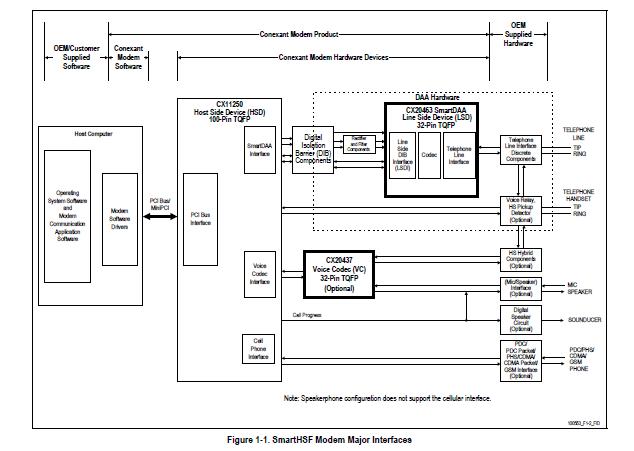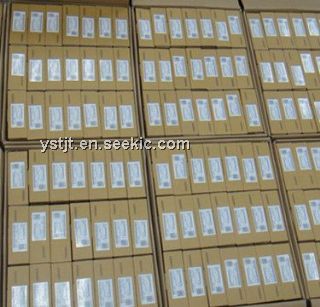Product Summary
The CX11270 is a Conexant. SmartHSF Host-Processed (SoftK56) V.90/K56flex Modem Device with SmartDAA technology supports analog data up to 56 kbps, analog fax to 14.4 kbps, telephone answering machine (TAM), and PCI Bus/Mini PCI host interface operation. In addition, the device set optionally supports cellular phone interface (PDC high speed/PDC packet data, PHS data, CDMA/CDMA Packet data, GSM data) or voice/speakerphone. The CX11270 meets the size and power requirements of the mobile environment. Table 1-1 lists the available models.
Parametrics
CX11270 absolute maximum ratings: (1)Supply Voltage, VDD: -0.5 to +4.0 VDC; (2)Input Voltage, VIN: -0.5 to (VIO +0.5) VDC; (3)Storage Temperature Range, TSTG: -55 to +125℃; (4)Analog Inputs, VIN: -0.3 to (MAVDD + 0.5) VDC; (5)Voltage Applied to Outputs in High Impedance (Off) State, VHZ: -0.5 to (VIO +0.5) VDC; (6)DC Input Clamp Current, IIK: ±20 mA; (7)DC Output Clamp Current, IOK: ±20 mA; (8)Static Discharge Voltage (25℃), VESD: ±2500 VDC; (9)Latch-up Current (25℃), ITRIG: ±400 mA.
Features
CX11270 features: (1)V.90 data modem with receive rates up to 56k bps and send rates up to V.34 rates, ITU-T V.90, K56flex, V.34 (33.6 kbps), V.32 bis, V.32, V.22 bis, V.22, V.23, and V.21; Bell 212A and 103; V.42 LAPM and MNP 2-4 error correction; V.42 bis and MNP 5 data compression; V.250 and V.251 commands; (2)V.17 fax modem with send and receive rates up to 14.4 kbps; V.17, V.29, V.27 ter, and V.21 channel 2; EIA/TIA 578 Class 1 and T.31 Class 1.0 commands; (3)Telephony/TAM, V.253 commands; 8-bit Law/A-Law coding (G.711); 8-bit/16-bit linear coding; 8 kHz sample rate; Concurrent DTMF, ring, and Caller ID detection; (4)V.80 synchronous access mode supports host-controlled communication protocols with H.324 interface support; (5)V.8/V.8bis and V.251 commands; (6)Cellular data hardware interface and software support (C models), Protocol stacks for PDC high speed data, PDC packet data, PHS data, CDMA IS-95A/IS-95B data, and GSM data; API for customer-provided cellular data protocol stack; (7)Full-duplex Speakerphone (FDSP) Mode (S models), Microphone and speaker interface; Telephone handset/headset interface; (8)Data/Fax/Voice call discrimination; (9)Host software/MMX-based digital signal processing; (10)Single configuration profile stored in host; (11)Operates in U.S./Japan/Canada; (12)Worldwide operation including U.S./Japan/Canada (W models), Complies to TBR21 and other country requirements; Caller ID detection.
Diagrams

 (China (Mainland))
(China (Mainland))







